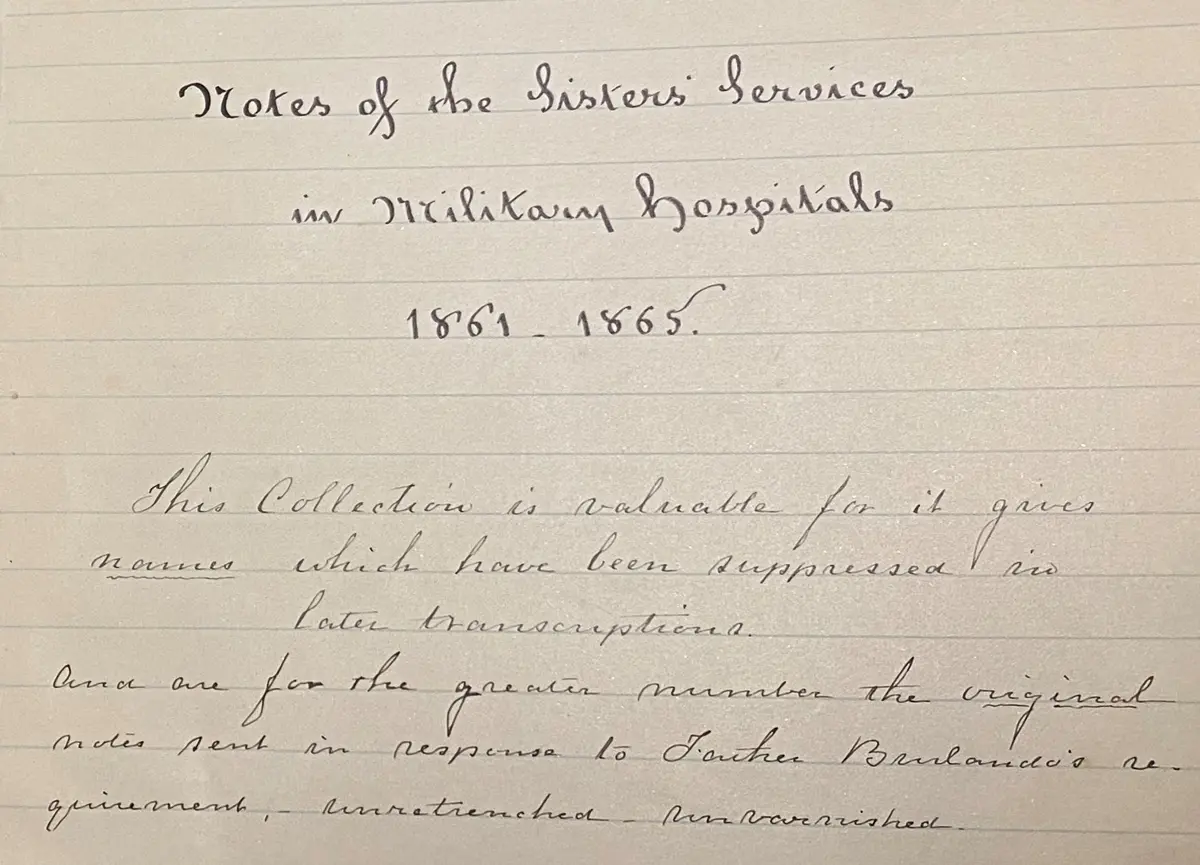Stories of Service, Enduring, Accessible, and Timeless
Daughters of Charity Provincial Archives Challenges
- Single venue for administration and access
- Software-as-a-Service (SaaS)
- Technology in perpetuity
- Searchable public interface
- Multimedia collections
Archivist
DAUGHTERS OF CHARITY PROVINCIAL ARCHIVES
T he Daughters of Charity is a Society of Apostolic Life founded in Paris, France, in 1633, by St. Vincent de Paul and St. Louise de Marillac. The early Sisters were unlike others at the time due to their desire to live and work among those in need, challenging the convention of Sisters predominantly living cloistered lives. The newly formed Daughters of Charity set up soup kitchens, organized community hospitals, established schools and homes for orphaned children, offered job training, taught the young to read and write, and improved prison conditions. Today, there are more than 14,000 Daughters of Charity living and working in more than 90 countries throughout the world, continuing their tradition of service.
Inspired by the work of the original Daughters, in the 19th century St. Elizabeth Ann Seton founded a community of sisters in the United States that became the Daughters of Charity Province in the United States. The Daughters of Charity Provincial Archives, housing the historic collection and library, is located at the site where she lived and served in Emmitsburg, Maryland.
Community and Collaboration
In 2011, the Daughters of Charity established The Province of St. Louise, bringing together the West Central, East Central, Southeast, and Northeast Provinces of the United States. Coming together has allowed these communities to collaborate more easily and address important issues collectively for greater impact. One of these collaborations is the Provincial Archives, managed by Archivist Scott Keefer. Per the Daughters of Charity Constitution, the Archives of the Province of St. Louise preserves records of enduring value, memorializes the life and work of the founders, promotes the community’s works, past and present, and makes their collections available for research.
The consolidation of the Provinces was the catalyst for a new collections management system (CMS). Prior to their implementation of ArchivEra, collections records were captured in various databases and Excel sheets, and many other types of files. Per Mr. Keefer, “We knew that we were able to assist researchers, but we also knew that we were missing things and doing a disservice to our researchers. We needed a centralized CMS, with a public front end. And because our collections increasingly include born-digital materials, we wanted a certain level of backup for high profile digital content that would also make it searchable. We looked at a number of systems and vendors, and Lucidea stood out because of their great customer service; everyone was always willing to work with us and be flexible. ArchivEra itself gives us flexibility—it incorporates guidelines and principles, but gives us room to innovate; for example, we can design a hierarchy that fits our unique needs.”

Collections and Questions
While the Archives is technically for the private use of the organization, it honors the public role the Sisters play by facilitating external access, thus the need for a public portal. The majority of external queries are of a genealogical nature, such as the most common request: a search for photographs or documents relating to someone’s Aunt or Great-Aunt who was a Sister. The Archives also serves alumni groups, former members, and academic audiences—e.g., researchers studying the history of Catholicism in the United States. The internal audience for archival collections is varied; as one example, Mr. Keefer mentioned that the Daughters still run a large social service center in Chicago, and its staff members routinely contact the Archives for information.
With more than 11,400 linear feet of paper, photographs, audio-visual materials, maps, and bound print forming the records of the Sisters of Charity and the Daughters of Charity back to 1809, the Archives holds among its treasured collections the writings and correspondence of St. Elizabeth Ann Seton (the first American-born Catholic saint), the highly detailed Civil War annals recorded by the nursing sisters, as well as writings from their service during the “Spanish Flu” in the early 20th century, and extensive records of ministry activities and members up through the present day.

Broad Benefits
Mr. Keefer told us being able to integrate multiple databases, offer powerful search capability, and support remote work (unexpectedly important during the COVID pandemic) have all made a positive impact on staff at the Provincial Archives. And there are other ways ArchivEra has helped increase efficiency. ArchivEra functionality makes it easy for staff to:
- promptly serve patrons while saving historical materials from repeat handling
- leverage permissions management to protect sensitive information
- backup high-profile digital materials and facilitate access to them
- view what restricted materials exist, the extent of those materials, and the parameters of the restrictions
- leverage ArchivEra as “Software as a Service” (SaaS) with all implementation, migration, maintenance, and troubleshooting supported by Lucidea
Upcoming projects leveraging ArchivEra reflect an evidence-based strategy based on the metrics and reporting capabilities of the CMS. Per Mr. Keefer, it’s possible to easily see what areas need more extensive finding aids work, while studying search behavior informs how his team might write user guides, with better explanations for how to use ArchivEra. New research guides are also in the offing; this may require the involvement of Lucidea’s Client Services team, which is certainly a benefit of the professional partnership.
The Provincial Archives views their purchase of ArchivEra as an investment—an investment in preserving and sharing their collections, serving their researchers, and supporting their work. ArchivEra as a tool provides system flexibility, collection access, and staff support—but it’s really the exceptional customer service provided by Lucidea that brought the Archives in as a client; they chose Lucidea before selecting the product because they wanted a partner as well as a CMS.